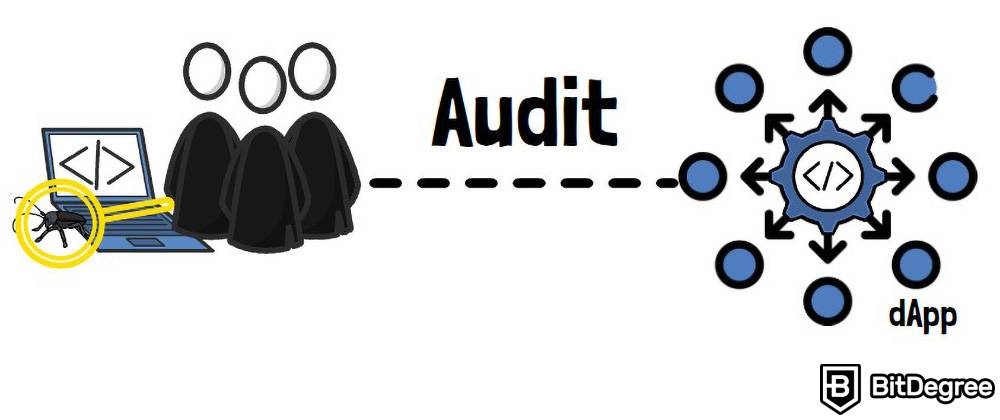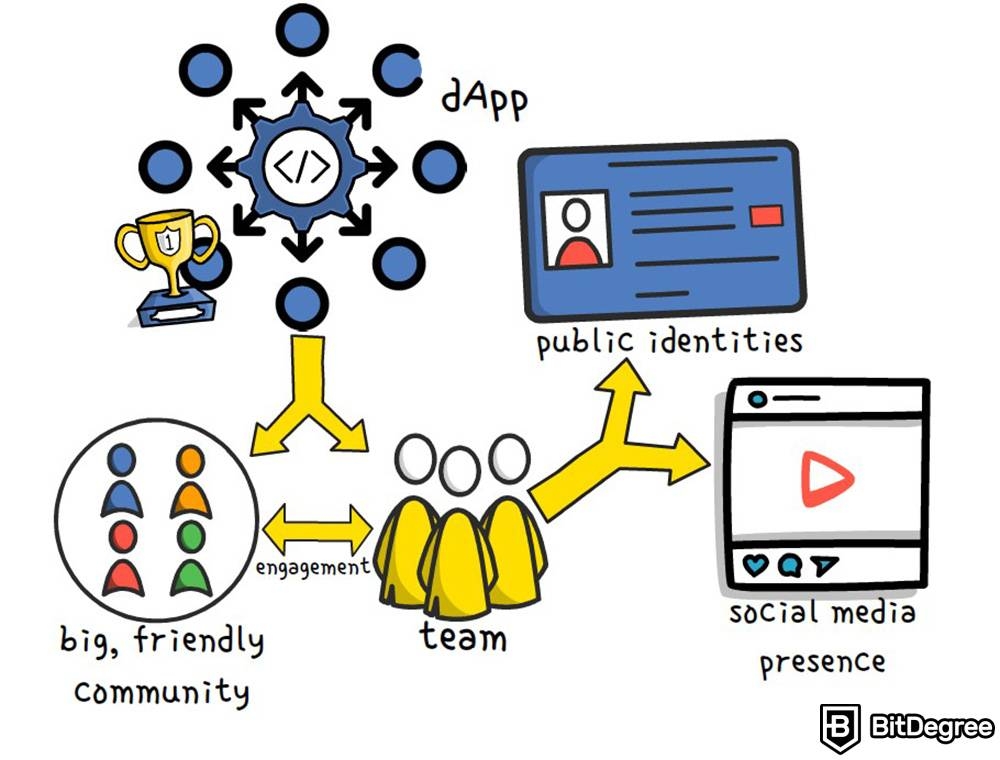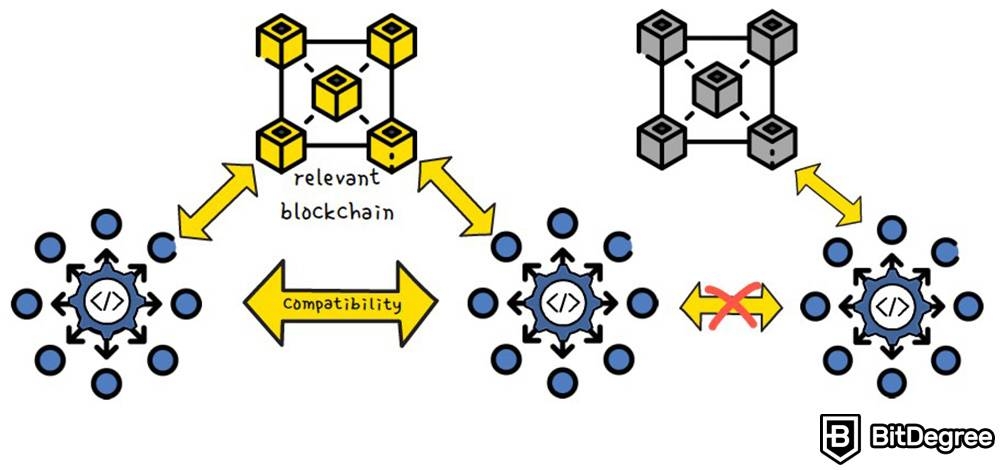6.4 Picking the Right dApps: Dos and Don'ts
Stop overpaying - start transferring money with Ogvio. Sign up, invite friends & grab Rewards now! 🎁
In this section, we’re going to talk about DeFi dApps, and how to pick the right one!
DeFi dApps are a huge, sophisticated topic. No wonder, people tend to feel lost and intimidated by its complexity. In the previous section about dApps, only the basic theory about what they are was covered. It’s time to go deeper and learn how to evaluate them, and choose the best dApps.
It’s very easy to get lost in the dApp maze, since there are so many of them. And when things are so confusing, it’s difficult to know where to even begin. If you’re reading this section, chances are you’ve already experienced this confusion yourself. But then, that’s why you’re here!
In this section, we’re going to examine what are the criteria of a good, trustworthy dApp, and what makes the best dApps stand out from the crowd. I’ll give you a brief description of every aspect worth paying attention to, and how to compare them. In the end, what now seems like a mess, will look like something way more approachable!
Now, let’s get to it!

Video Explainer
Video Explainer: Picking the Right dApps: Dos and Don'ts
Reading is not your thing? Watch the "Picking the Right dApps: Dos and Don'ts" video explainer
How to Pick the Right DeFi dApp? (Dos and Don’ts Explained)


What’s Up With dApps?
So, decentralized applications, or dApps, have gained a lot of popularity in recent years due to their ability to enable peer-to-peer transactions on decentralized networks. Being created on a daily basis, DeFi dApps seem like a revolutionary way of interacting with money and the internet, in general. Sounds good. But, things are never that simple!
Let’s look at it this way:
Here’s John. He’s eager to learn things, and so it happens that he just found out about one particular dApp. It’s a promising-looking decentralized lending protocol, and the reason why it got John's attention was the fact that it promises high returns to anyone who chooses to invest into it. Sounds good, sounds tempting. But, that’s how many financial mistakes are made - by jumping straight into action, without critical evaluation. There’s no such thing as free lunch, after all.
However, John has read the Crypto 101 Handbook. He's better than that, and he’s not gonna act without conducting research beforehand. So, here are the steps that John will have to take in order to make sure that this dApp is legit.
Total Value Locked (TVL)
First of all, TVL - a very important metric. Three letters that fit everything underneath them. In this case - literally. “TVL” stands for “Total Value Locked”, and is a metric that is used to measure the total value of assets locked into a dApp. In other words - how much have people already invested in it.

It's a good indicator of the popularity and adoption of the dApp examples in question, as well as the level of trust that users have in them. The higher the TVL, the more assets are being held in the dApp, the more active dApp development takes place, and the more popular it is.
Here’s a simple analogy. If you were to deposit money into a bank, you’d probably choose an institution that has a solid reputation and years of experience, instead of simply depositing your hard-earned money into a ‘Bank 3000’ that you found behind a corner of an abandoned factory. The same goes for DeFi dApps.
So, let’s say a particular decentralized lending protocol has a TVL of $4.5 billion. Not only is it a green flag because of how large the number is, but it’s been increasing over time, as well. That’s yet another optimistic signal about the actual financial health of the dApp in question.
An important thing to keep in mind is the fact that this does not mean that the investment will be 100% safe, and that it will guarantee returns. Yet, it’s a convenient way to evaluate the potential risks.
Audits
Another important indicator is an audit. Before choosing a dApp contract address, it’s essential to evaluate it, since this ensures the security and reliability of the code behind it.

So, what does that mean? An audit is a thorough examination of the dApp’s codebase by a team of experts. It’s conducted in order to identify and fix any vulnerabilities or bugs that may be lurking within the dApp’s architecture. It literally is the DeFi version of a structural inspection that’s performed on buildings. You don’t wanna buy an apartment in a house that has walls built out of cereal boxes, now do you?
Whenever you visit a project’s website, you should easily find an ‘Audits’ section on it. Reliable companies and the most popular dApps don’t hide it, or make it impossible for users to verify this info themselves. Now, after having checked that a particular dApp has made their audit information public, you can take an extra step. Search up the names of the audit companies, and see whether they actually exist. You can tell that by looking up their social media platforms, and checking out their official websites.
Community & Team
Okay, next up on the list is community and team. It’s an important indicator that isn’t ignored by the best and most popular dApps.

The best way to view the importance of community and team surrounding a particular dApp is this:
Let’s say that a dApp is an apartment. In this case, the architects and the construction team represent the team behind a particular dApp. They’re either reliable or not.
And the community is the neighborhood in which this apartment is being built. It’s either pleasant to be in… or not.
When studying dApp examples to select the best dApp, the importance of a strong community and an open, transparent team behind it are significant, as these factors speak to the credibility and stability of the project.
If people stick to it - this means they find value in it, and don’t get pushed away by dishonest and unreliable cash grabbers. The same applies to the developers. If the minds behind a project are unreliable… How can their product be different?
The first thing to look for is to see if the team behind the dApp development has publicly disclosed their identities. This demonstrates their commitment and accountability to the project.

Social media is another factor. Active social media presence and consistent engagement with the community show that the team is not hiding, and they’re proud of the product they’ve created. They want the public to see, and discover it.
Imagine you’re suddenly in need of someone to take care of your dog for the weekend. Would you trust your dog to a stranger who has an anonymous Facebook profile? If a public business has to hide something as simple as the founders’ names, it definitely sends out a suspicious signal.
So the lesson here is clear. Check out the team, make sure they’re actual, real people who don’t try to hide under layers of anonymity. That’s done by making sure that their socials are active.
Technology
Okay, next stop - technology. The importance of technology when navigating through DeFi dApps is crucial. It ensures that the dApp is built on a relevant and reliable platform, and that it serves a specific and useful purpose.
The point here is intuitive. No matter how posh and expensive your laptop may be, if it still runs on Windows 98, you’re about to have a bad time.

Choosing a dApp that is built on a relevant blockchain network ensures compatibility and interoperability with other dApps and services on the same network. To translate this into down-to-earth language, you can say that you have to make sure the dApp of your choice is actually compatible with the most vibrant, buzzing, and promising ecosystems out there.
Therefore, a dApp that runs on an outdated or irrelevant blockchain network, or lacks the features or functionality you need, may not be a wise investment. It’s simply headed toward a dead-end. By the way, if you wanna learn more about blockchains, in general, check out this section!
What Not to Do When Choosing dApps?
So, the things that I mentioned up to this point are the “dos” of how to evaluate a dApp. Logically, the “don’ts” are exactly the opposite of them. But we gotta make sure the lesson is clear. Based on everything I’ve said previously, we can list 6 ‘don’ts’ that are best to always keep in mind:
- Don't choose a dApp contract address that hasn't been audited. Without an audit, there is a higher risk of security breaches, loss of funds, and other issues that can harm users.
- Don't choose a dApp that has a weak community or a team that is not open and transparent.
- Don’t choose a dApp with low levels of activity on their socials.
- Don't choose a dApp that’s built on unknown, obscure blockchain networks.
- Don’t choose a dApp for which you can’t find any data on how many funds are locked across its protocols.
If you keep in mind all the ‘Dos’ and ‘Don’ts’ that were emphasized up until now, it’s sure to make your journey through the DeFi jungle easier, safer, and more pleasant!










